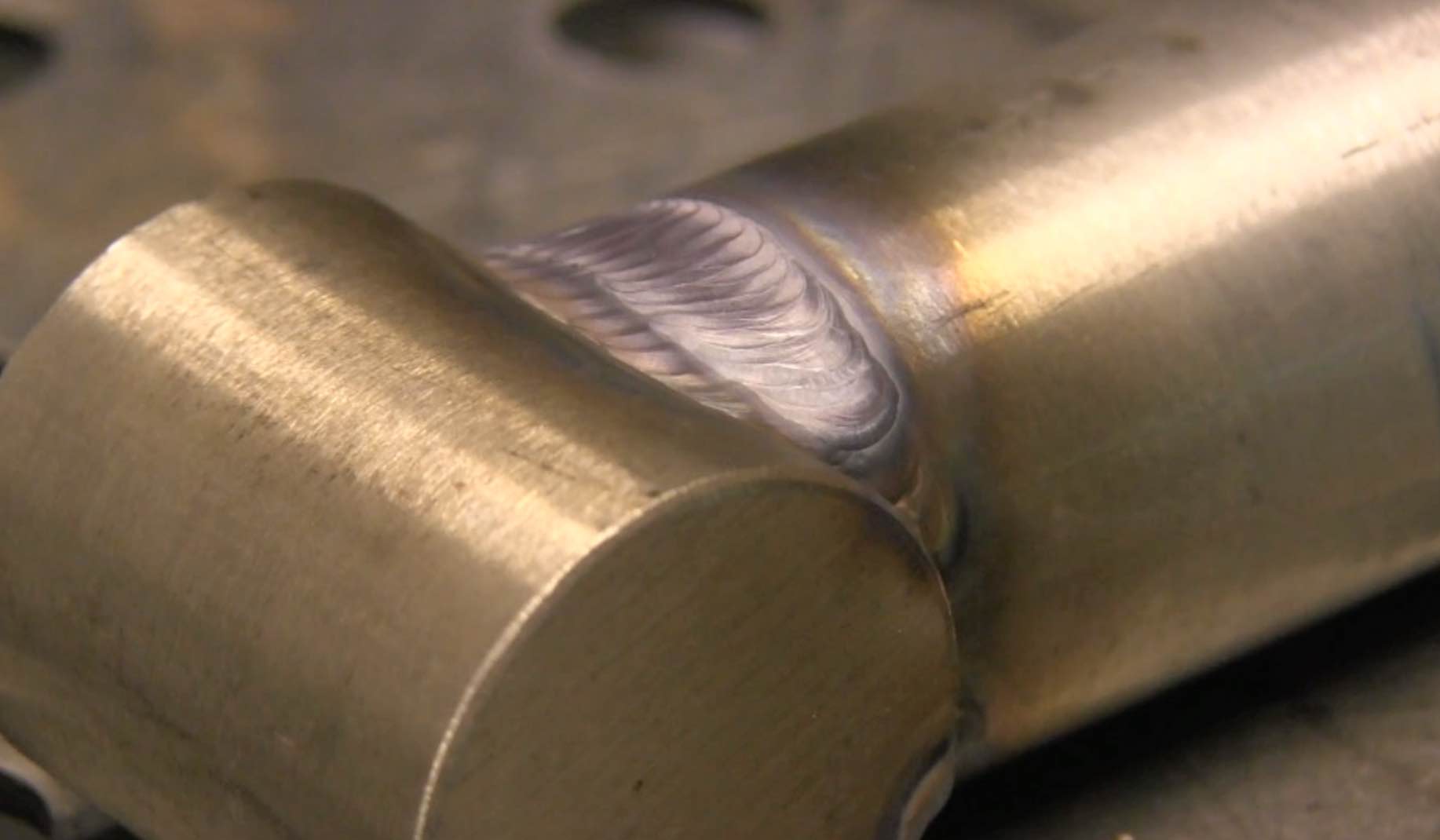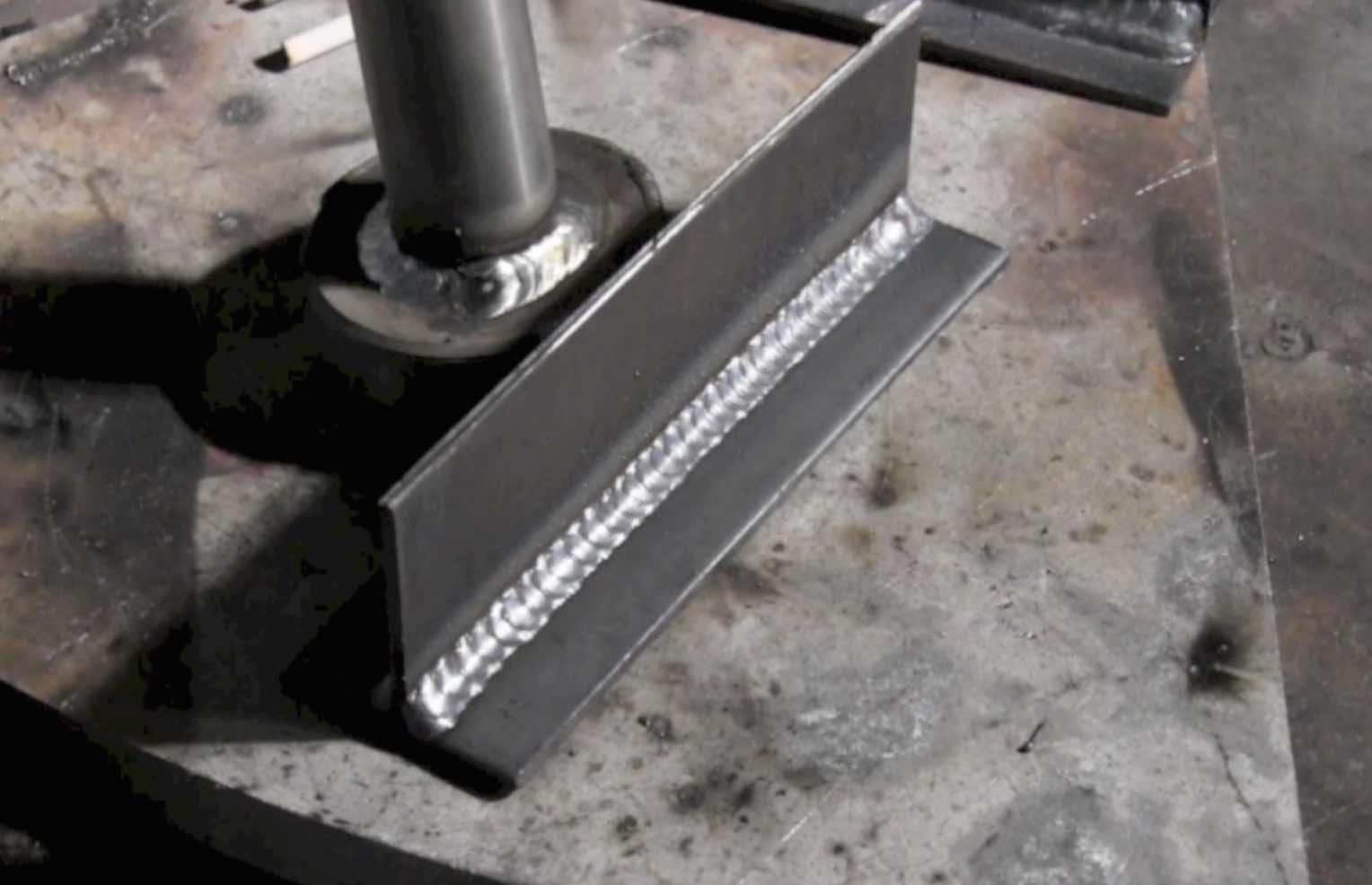Lincoln Powermig 210 mp TIG, MIG, Stick Demo
Lincoln powermig 210mp TIG Welding mode ( lift arc)
I am building a bend test fixture out of scrap stainless round and am using a Lincoln Powermig 210mp for all the welding.
Dont be fooled by the name "Power Mig" because The 210mp does lift arc DC tig, MIG, and Stick...
And in this video, I did all 3....TIG, MIG, and Stick.
check out Lincoln's page on the Powermig 210mp
I started out with Tig because I had some 1-1/2" stainless round stock to weld for the base of the bend test fixture.
But once the base was done, I swapped over to Stick using Lincoln excalibur er309-16 stick rods.

Stick Welding mode settings...
"hot start" and "arc force" on the Lincoln Powermig 210 mp
In Stick mode, the powermig 210mp has "hot start" and "arc force" settings that allow for fine tuning the arc to the rod used and the task at hand.
The Hot start function actually bumps up amperage when you first strike an arc to help prevent sticking the rod. A useful feature.
...and the Arc force setting can be used to dial in a soft arc , or a more digging arc.
with the arc force set high, the machine will increase amps when voltage drops. ( voltage drops when the arc gets really tight and you are about to stick the rod)
Generally speaking, higher arc force settings are used for 6011 rods and other rods like 7018 run good on lower arc force settings. But there are always exceptions to the rule. ( this lincoln powermig 210mp is not rated for 6010 rods)
For example, Sometimes I like to set arc force high for my 7018 welding and just pretty much bury the arc and let the machine do the work.
7018 rods run smooth on low arc force settings too but amperage needs to be high enough to prevent sticking.
Since 309 stainless stick rods weld more like 7018 than 6011, I selected 7018 on the dial when prompted...not sure if it even mattered.
MIG welding with the Lincoln 210mp

If you are in the market for a Mig welder, It makes sense to think of the Powermig 210 as primarily a Mig machine.
Sure its a great little stick welder too, and it also does lift arc Tig, But to me, it makes the most sense to think of it as a Mig welder that will also Stick and Tig in a pinch.
The Lincoln Powermig 210mp has 2 settings in MIG mode that I really like.
..Wire run in adjustment that slows wire feed from the time you press the trigger , to the time, where the wire makes contact with the metal.
this prevents stubbing and bad rough starts.
Another setting I really like any mig welder to have is an "inductance setting" Inductance controls how soft or harsh the arc is.
A high inductance setting usually makes the puddle wet out better.
And for using straight co2 gas, being able to set inductance high, really makes a difference....it makes co2 weld more like c25 (75/25 ar/co2)
Observations
- While I dont love "lift arc"...with a foot pedal, its not too bad.
- In part 1 of this series on the Lincoln Powermig 210 mp, I even ran a fusion bead on a box cutter blade without any trouble so its got a decent low end control. I have not tried it without the foot pedal yet so I am not really sure how it would light up because the amperage dial starts at 20 amps.
- With lift arc, I did not always get an arc. Sometimes, I had to press the pedal more to make sure I establish an arc. With no high frequency start, I think this is pretty normal for lift arc TIG machines.
- The arc was very smooth for the stainless stick welding I did. I cant wait to see how it burns 7018.
- The Mig welding arc was really smooth. I was impressed.
- By setting inductance to 7 and wire run in down to around 65%, I got really nice starts and a smooth arc.
- The preset wire feed speed for a given thickness seemed very high to me...But it does get you in the ball park.
- I adjusted wire speed down a bit..for example, the preset settings for 3/16" thick steel were 19 volts and 330ipm for .030" (.8mm) wire.
- I dropped wire speed down to 250 ipm at 19 volts and the arc was smoother.

















